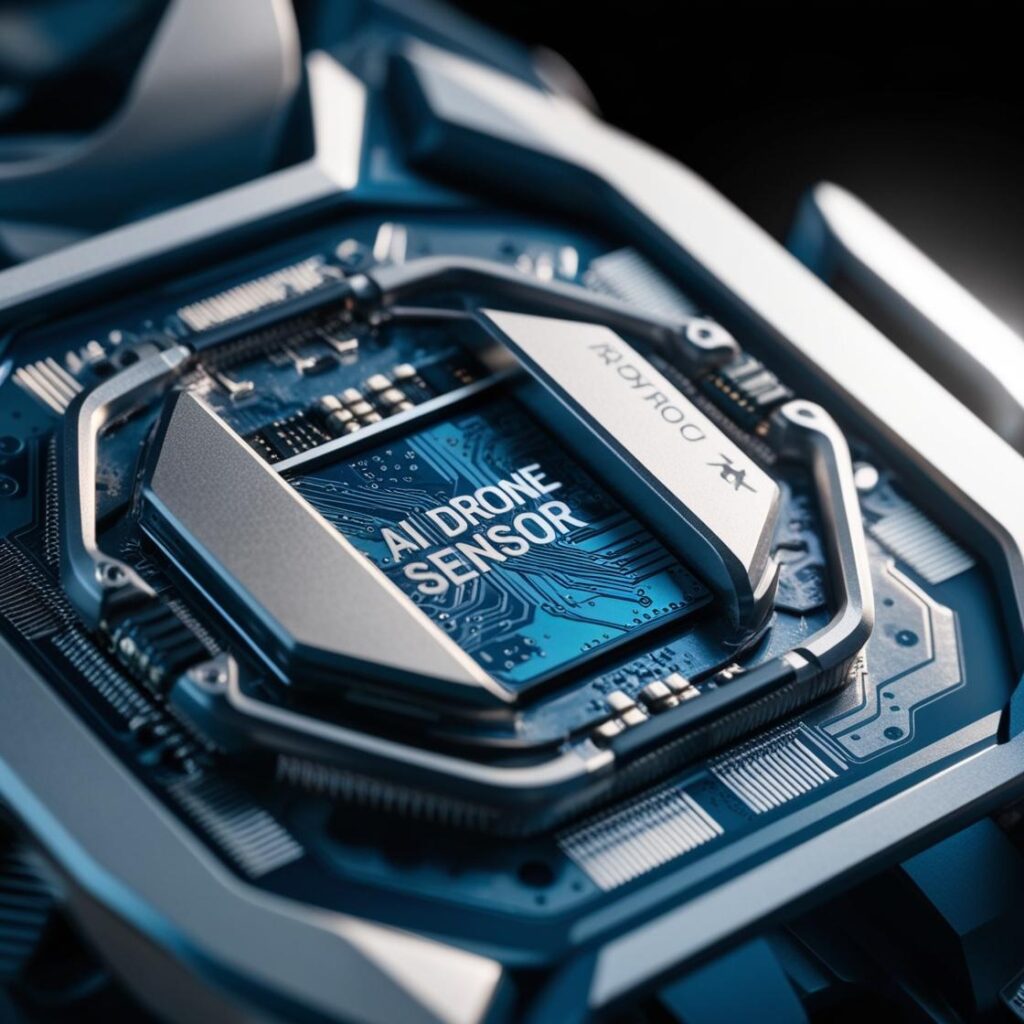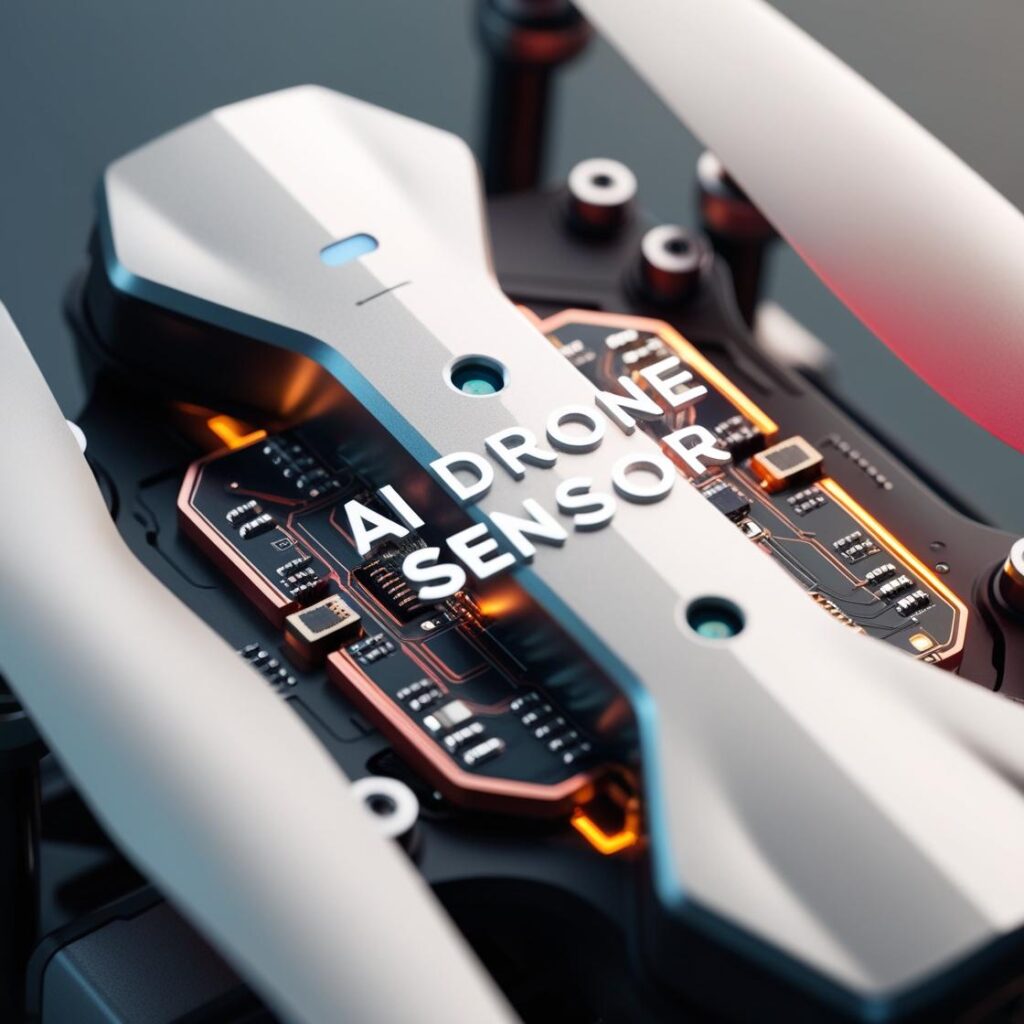Overview of AI Drone Sensor
The AI Drone Sensor Market is at the forefront of technological innovation, enabling smarter, more efficient, and autonomous operations in drones. These sensors, powered by artificial intelligence, play a pivotal role in various applications, including navigation, collision avoidance, environmental monitoring, and data acquisition.

Drones equipped with AI sensors have rapidly penetrated industries such as defense, agriculture, logistics, and energy, driven by their ability to analyze and respond to environmental inputs in real-time. The integration of AI with advanced sensor technologies like LiDAR, infrared, and multispectral imaging has further enhanced the operational scope of drones.
Attractive Opportunities
- Increased Adoption in Agriculture
AI drone sensors are transforming precision agriculture by enabling efficient crop monitoring, disease detection, and yield estimation. Advanced sensors with AI capabilities ensure better data accuracy and timely insights. - Expansion in Urban Planning and Infrastructure Management
Urban planners leverage drones with AI sensors for surveying, construction monitoring, and infrastructure inspections, presenting significant market growth opportunities. - Growth in Environmental Monitoring Applications
Drones equipped with AI sensors are being deployed for real-time air quality measurement, forest fire detection, and wildlife monitoring, emphasizing sustainability and environmental conservation. - Defense and Security Applications
Defense forces are increasingly investing in AI drone sensors for surveillance, reconnaissance, and tactical missions, enhancing situational awareness and decision-making capabilities. - Commercialization of Autonomous Delivery Drones
E-commerce and logistics companies are exploring AI-driven drones with advanced sensors to automate delivery processes, reducing costs and improving efficiency.
Global Market Dynamics
- Market Drivers
- Technological Advancements: Enhanced capabilities of AI algorithms and sensor miniaturization are driving market growth.
- Growing Use Cases Across Industries: Sectors like defense, agriculture, and logistics are adopting drone sensors for varied applications.
- Regulatory Push: Governments and regulatory bodies are formulating drone usage frameworks, creating conducive environments for market expansion.
- Market Restraints
- High Costs: Advanced AI sensors for drones involve significant R&D and production costs, limiting adoption among smaller enterprises.
- Data Privacy Concerns: Drones equipped with high-resolution sensors raise questions about surveillance and data security.
- Opportunities
- Development in AI-Based Edge Computing: The ability of sensors to process data at the edge reduces latency, opening new application areas.
- Emerging Markets: Asia-Pacific and Latin America are witnessing increased drone deployments in sectors like agriculture and logistics.
- Challenges
- Integration Complexities: Merging AI sensor technology with existing drone systems requires technical expertise and significant investments.
- Regulatory Barriers: Differences in drone-related regulations across regions impact global market adoption.

Global Market Ecosystem Analysis
- Core Components
- AI Algorithms: For real-time data processing, predictive analysis, and autonomous decision-making.
- Sensor Types: LiDAR, thermal imaging, infrared, ultrasonic, and multispectral sensors dominate the landscape.
- Communication Modules: 5G, Wi-Fi, and satellite communication enable data transmission between drones and ground stations.
- Stakeholder Ecosystem
- Manufacturers: Focus on developing high-performance sensors with AI integration.
- Service Providers: Offering drone-as-a-service (DaaS) models for commercial and industrial applications.
- End Users: Industries such as defense, agriculture, and logistics driving sensor demand.
- Value Chain Analysis
- Upstream: Sensor component manufacturing and software development.
- Midstream: Drone assembly and system integration.
- Downstream: Deployment and operational services.
Recent Developments in the Market
- Launch of AI-Powered Multispectral Sensors: Companies like DJI and Parrot have introduced advanced multispectral sensors tailored for precision agriculture and environmental monitoring.
- Strategic Collaborations: Leading drone manufacturers are partnering with AI technology providers to enhance sensor capabilities for defense and industrial applications.
- Rising Investments in Autonomous Drones: Venture capital and government funding are accelerating innovation in autonomous drones equipped with AI sensors.
- Development of Lightweight and Compact Sensors: Miniaturized sensors are gaining popularity, enabling better drone performance and battery efficiency.
- Regulatory Updates: The European Union and the U.S. have introduced updated drone operation regulations, boosting market growth.
Key Market Players
- DJI: Industry leader in drones with cutting-edge AI sensor integration.
- Parrot: Renowned for its advanced drone sensor technologies in agriculture and mapping.
- FLIR Systems: Specializes in thermal imaging and infrared sensors for drones.
- Teledyne Technologies: Innovator in LiDAR and multispectral imaging sensors.
- AeroVironment: Pioneering AI-driven drones for defense and security applications.
Scope of the Report
- Segmentation by Technology
- LiDAR
- Infrared Sensors
- Multispectral Imaging Sensors
- Ultrasonic Sensors
- End-Use Applications
- Precision Agriculture
- Surveillance and Security
- Infrastructure Inspection
- Environmental Monitoring
- Regional Analysis
- North America: Early adopters of AI sensor technology.
- Europe: Increasing adoption in urban planning and environmental conservation.
- Asia-Pacific: Significant growth in agricultural and logistics applications.
- Rest of the World: Rising investments in drone technology for public safety.
- Forecast Period
- The market is analyzed for trends and projections up to 2030.
FAQs
- What are AI Drone Sensors?
AI drone sensors are advanced devices integrating artificial intelligence to enable drones to perform tasks such as navigation, environmental monitoring, and obstacle avoidance autonomously. - Which industries drive the demand for AI drone sensors?
Agriculture, defense, logistics, energy, and environmental monitoring are the primary sectors driving demand. - What are the technological advancements in this market?
The development of lightweight, miniaturized sensors, enhanced AI algorithms, and edge computing capabilities are major advancements. - Who are the key players in the market?
DJI, Parrot, FLIR Systems, Teledyne Technologies, and AeroVironment are some of the prominent players. - What is the growth potential of the AI Drone Sensor Market?
The market is poised for exponential growth, driven by advancements in AI and increasing drone adoption across industries.